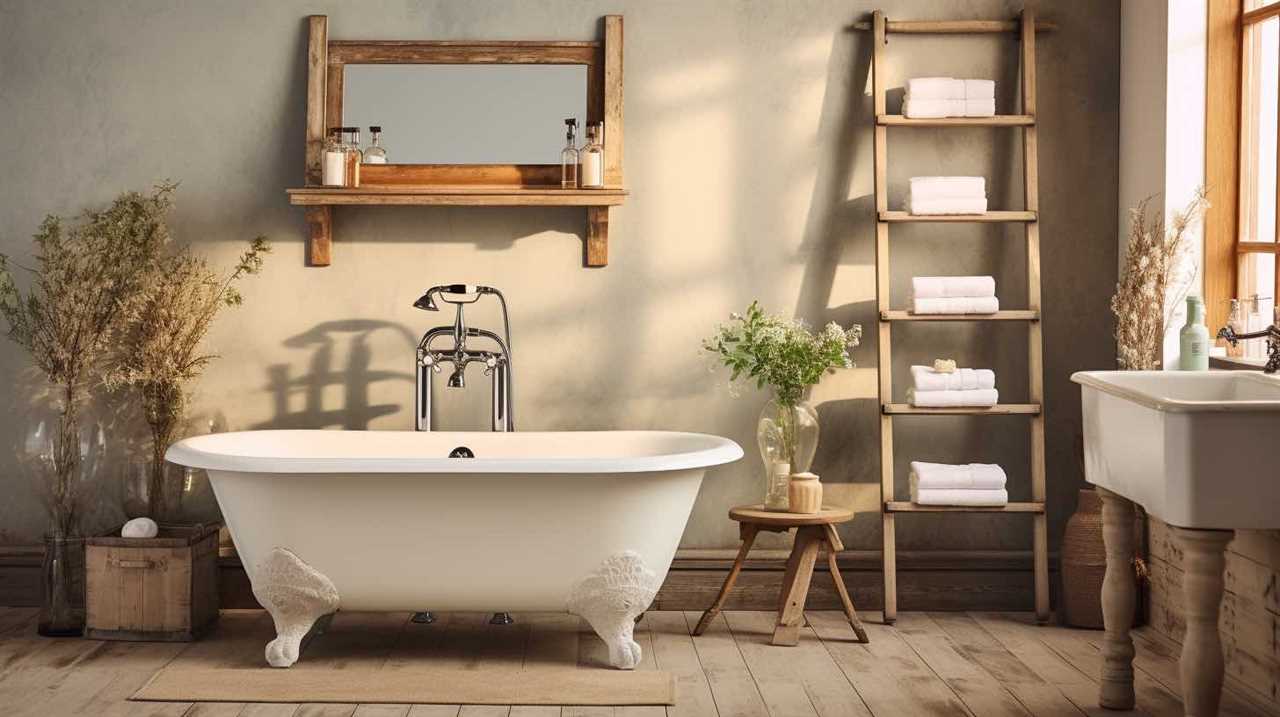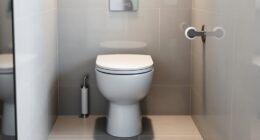Do you want to know how to say ‘bathroom’ in Italian? Don’t worry, we have all the information you need! In this article, we will share the common words and phrases that will help you navigate the bathroom in Italy like a pro.
From essential vocabulary to helpful expressions, you’ll be equipped with everything you need to find and communicate about the bathroom with confidence.
So, let’s dive in and discover the Italian language’s secrets to the bathroom!
Key Takeaways
- ‘Il bagno’ is the common term for ‘the bathroom’ in Italian.
- Other terms for ‘bathroom’ in Italian include ‘toilette’ and ‘servizi’.
- It is customary to ask for permission before using someone’s bathroom by saying ‘Mi scusi, posso usare il bagno?’.
- When asking for the location of the bathroom, you can use the phrase ‘Dov’è il bagno?’ or ‘Mi scusi, potrebbe indicarmi il bagno?’.
Common Italian Words for Bathroom
In our quest to learn Italian, let’s explore some common words for the bathroom.

In Italian culture, there are different types of bathrooms. The most common one is called ‘il bagno,’ which means ‘the bathroom.’ Another type is ‘il gabinetto,’ which refers to a toilet or restroom. If you’re in a public place, you might come across ‘i servizi’ or ‘i bagni pubblici,’ which are public restrooms.
When asking for directions to the bathroom, you can use useful phrases like ‘Dov’è il bagno?’ which means ‘Where is the bathroom?’ or ‘Mi scusi, posso usare il bagno?’ which means ‘Excuse me, may I use the bathroom?’
Mastering these phrases will be helpful for navigating Italian culture and ensuring you can find a restroom when needed.
Bathroom Vocabulary in Italian
Let’s explore the vocabulary for the bathroom in Italian. Here are some essential words and phrases to help you navigate the bathroom in Italy:

- Toilet – Il bagno
- Sink – Il lavandino
- Shower – La doccia
- Mirror – Lo specchio
When it comes to bathroom etiquette in Italy, there are a few cultural differences to keep in mind. Firstly, it’s common to find bidets in Italian bathrooms, which are used for personal hygiene.
Secondly, it’s customary to carry a small pack of tissues with you, as some public restrooms may not provide toilet paper.
Lastly, it’s important to note that many Italian bathrooms have separate trash bins for toilet paper, as the plumbing system can be sensitive.
How to Say Bathroom in Italian
We learned some essential bathroom vocabulary in Italian, and now let’s delve into how to say ‘bathroom’ in Italian.

The word for ‘bathroom’ in Italian is ‘bagno’.
When visiting Italy, it’s important to be familiar with Italian cultural norms around bathroom etiquette. In Italy, it’s customary to ask for permission before using someone’s bathroom, especially in private homes or small establishments.
To ask for directions to the bathroom, you can say ‘Dov’è il bagno?’ which translates to ‘Where is the bathroom?’ It’s always polite to use ‘per favore’ (please) when making this request.
Remember to listen carefully to the directions given to you, as the bathroom may be referred to as ‘toilette’ or ‘servizi’ in some places.

Italian Phrases for Finding the Bathroom
Continuing from our previous discussion on how to say ‘bathroom’ in Italian, let’s now explore some useful Italian phrases for finding the bathroom.
When you’re in Italy and in need of directions to the bathroom, these phrases will come in handy:
- ‘Dov’è il bagno?’ – This means ‘Where is the bathroom?’ and is a common way to ask for directions.
- ‘Mi scusi, potrebbe indicarmi il bagno?’ – This translates to ‘Excuse me, could you please show me the bathroom?’ and is a polite way to ask for help.
- ‘C’è un bagno qui vicino?’ – If you want to know if there’s a bathroom nearby, this phrase will be useful. It means ‘Is there a bathroom nearby?’
- ‘Dove posso trovare la carta igienica?’ – In case you run out of toilet paper, you can ask ‘Where can I find toilet paper?’ using this phrase.
Essential Italian Expressions for the Bathroom
Moving on to the topic of essential Italian expressions for the bathroom, we can now delve into useful phrases that will help us navigate through this crucial area.
When it comes to asking for directions to the bathroom, you can use the phrase ‘Dov’è il bagno?’ which means ‘Where is the bathroom?’ Another common phrase is ‘Posso usare il bagno?’ which means ‘Can I use the bathroom?’

It’s also important to be aware of the bathroom etiquette in Italian culture. One important rule is to always remember to close the door when using the bathroom, as leaving it open is considered impolite. Additionally, it’s customary to keep the bathroom clean and tidy for the next person.
Frequently Asked Questions
Are There Any Specific Etiquette or Cultural Norms to Keep in Mind When Using Public Bathrooms in Italy?
Proper bathroom etiquette in Italian culture involves respecting personal space, keeping the facilities clean, and avoiding excessive noise. Cultural expectations and norms when using public bathrooms in Italy emphasize the importance of maintaining a sense of privacy and cleanliness.
What Are Some Common Slang or Informal Words for Bathroom That Are Used in Everyday Conversation?
In everyday conversation, Italians often use slang or informal words to refer to the bathroom. Some common words for restroom in Italy include "bagno," "toilette," and "servizi." These terms are widely understood and used by Italians.
Are Bidets Commonly Found in Italian Bathrooms?
Bidets are commonly found in Italian bathrooms. They are a popular hygiene fixture that adds sophistication to the bathroom decor. Italian design trends focus on creating functional and stylish spaces.

How Do You Ask Someone for Directions to the Nearest Bathroom in Italian?
When in Italy, it’s important to know how to ask for directions to the nearest bathroom. Additionally, learning some key Italian phrases for asking for directions to other places and navigating public transportation will be helpful.
Are Public Restrooms Generally Free or Do You Have to Pay a Fee to Use Them in Italy?
Public restrooms in Italy are generally free, but there can be exceptions for certain establishments. It’s interesting to note that this convenience is widely available, making it easier for visitors to find a restroom without worrying about fees.
Conclusion
In the vast landscape of the Italian language, the word ‘bathroom’ stands as a humble oasis, offering refuge and relief to weary travelers.
Like a hidden gem amidst the bustling streets of Rome or Florence, the bathroom is a sanctuary where one can find solace and privacy.

Whether you call it ‘bagno’ or ‘servizi igienici,’ the importance of this word transcends language barriers, reminding us that even in foreign lands, the need for a bathroom is universal.










